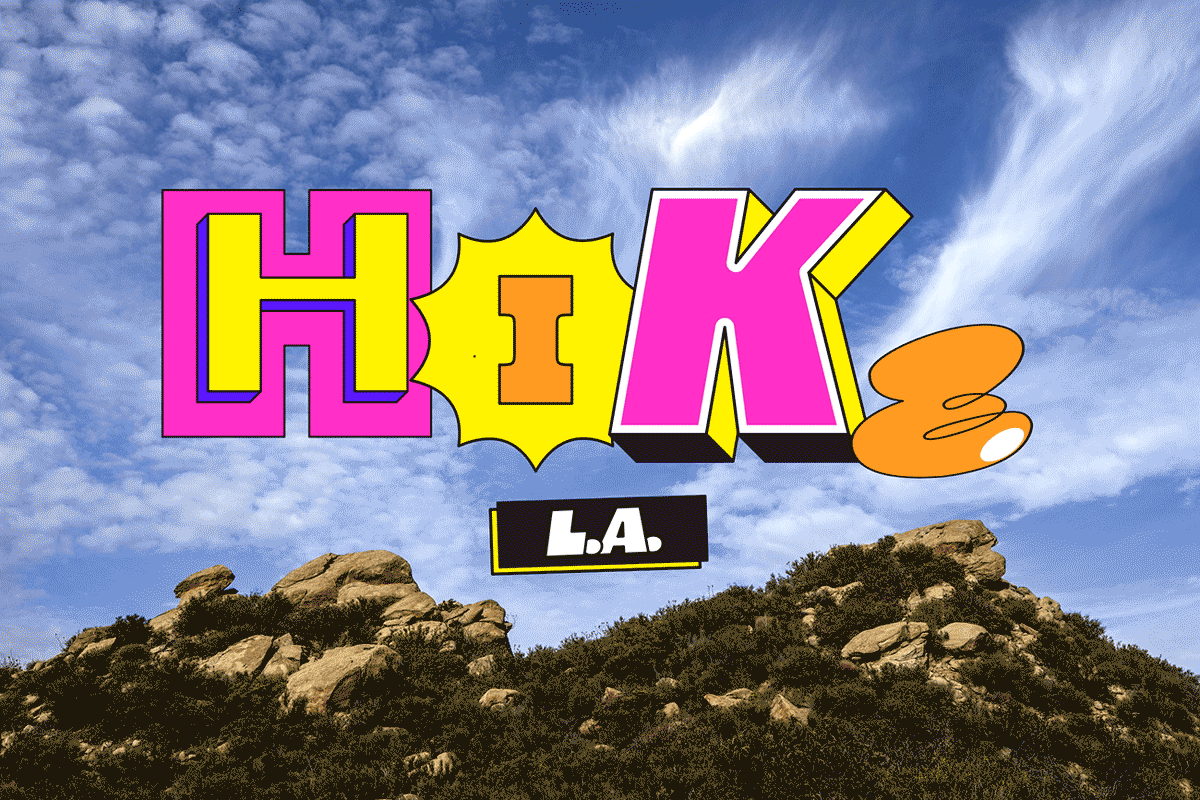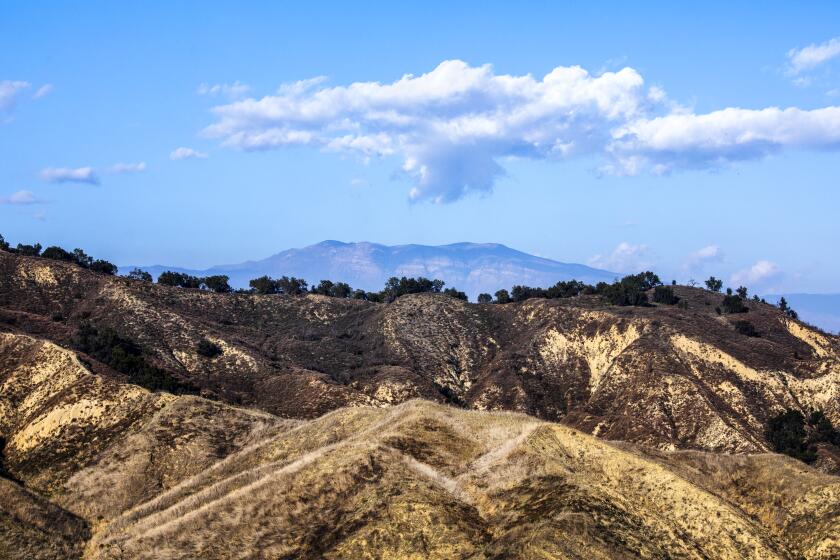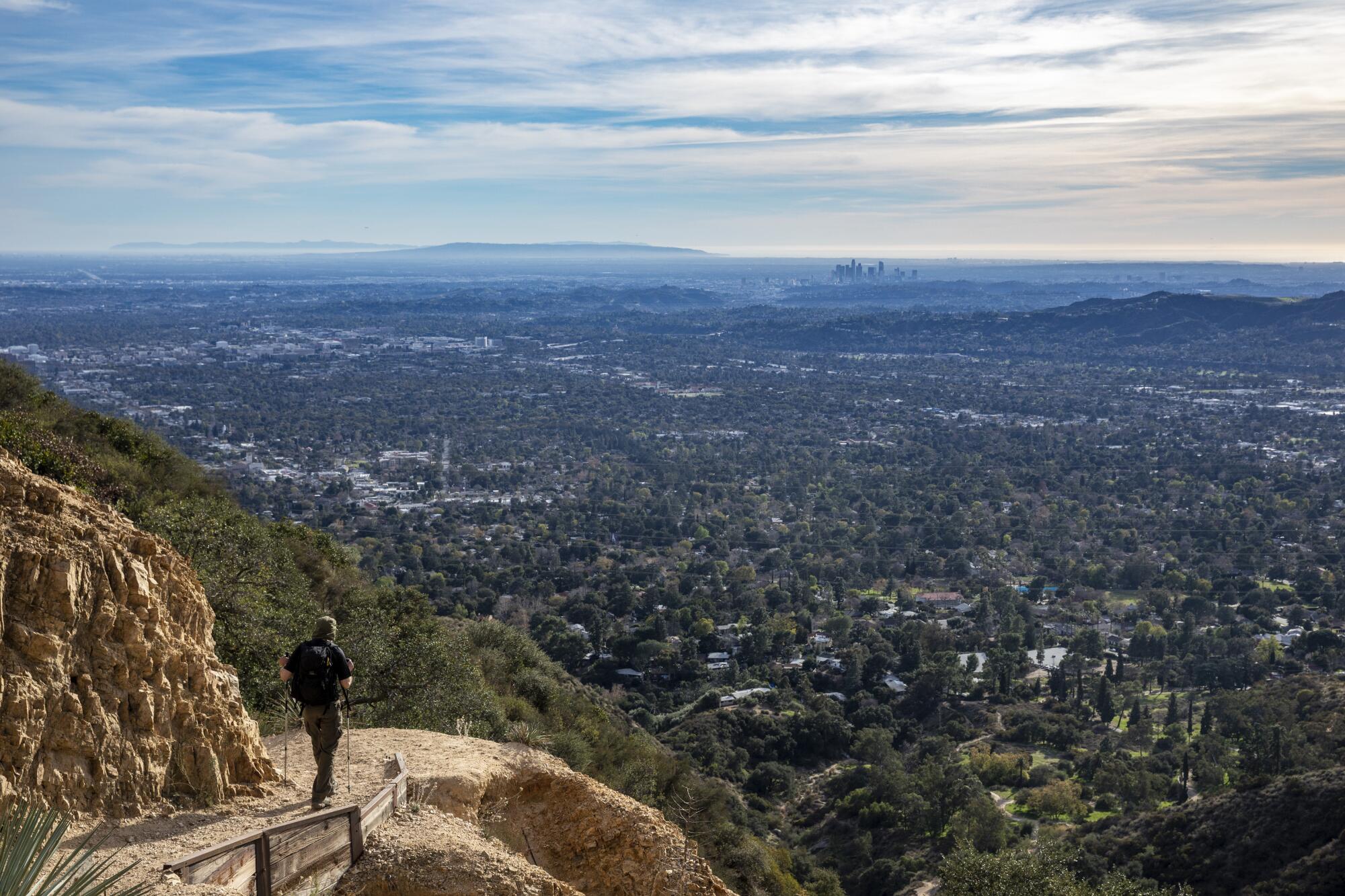
This story is part of our ultimate guide to hiking in L.A. You can buy a print copy at the L.A. Times store.
Echo Mountain, amid the 700,000 acres of national forest that is L.A.’s backyard, was once a playground for the well-to-do.
More than a century ago, the barren mountaintop above Altadena was transformed into a resort where the wealthy came to party in a civilized manner, breathe fresh air and immerse themselves in nature — all without setting foot on a trail. Some ruins remain, giving modern-day hikers a glimpse of what passed for luxury back in the day.
The sprawling four-story Echo Mountain House opened in 1894 at the dawn of L.A.’s great hiking era, when thousands of Angelenos became enthralled with exploring their wild backyard.
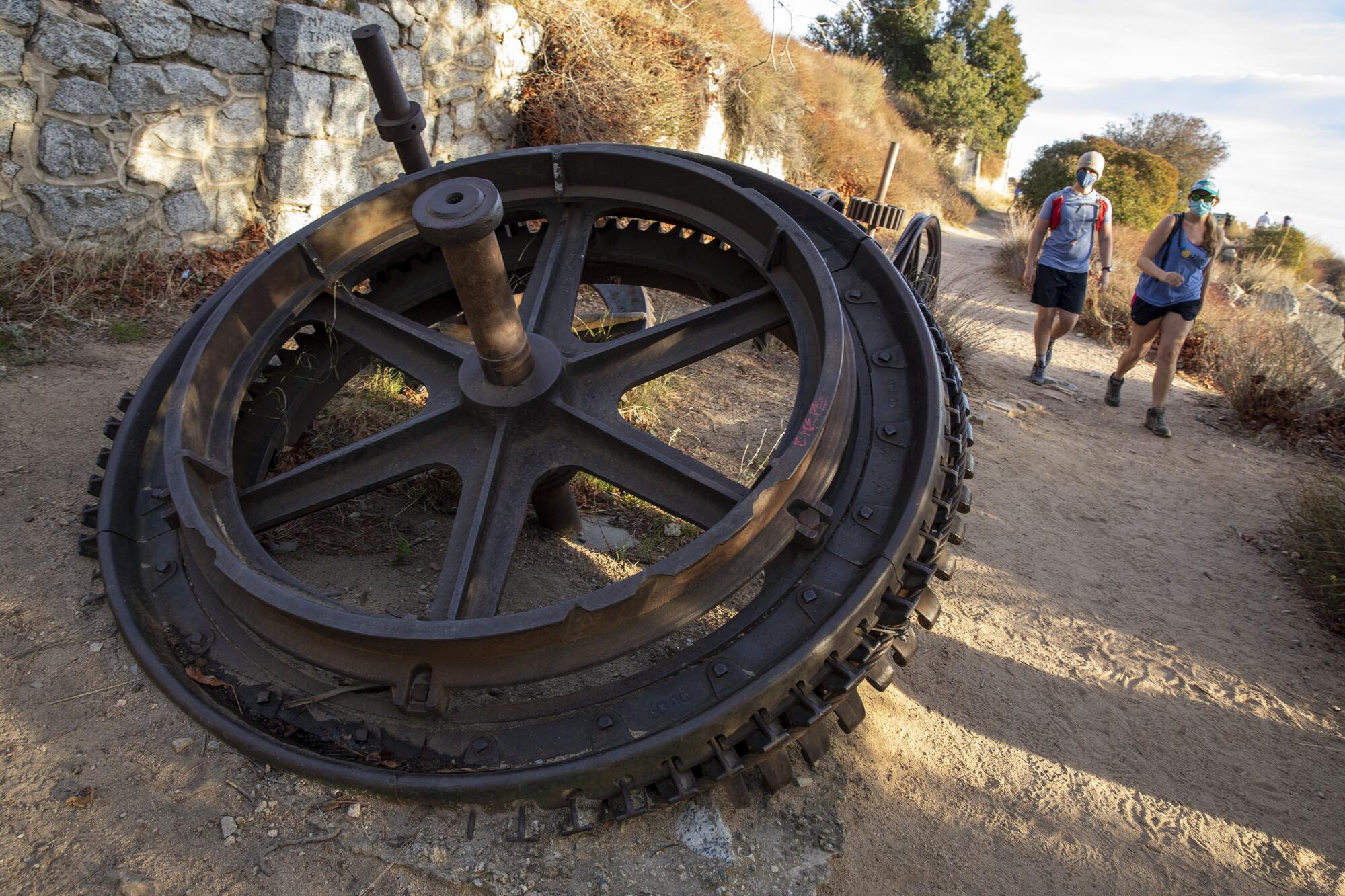
Plenty of not-so-wealthy people hiked up a steep donkey trail to the 3,200-foot summit. Those with money rode in open cars called chariots, part of the electric Mt. Lowe Railway that swept visitors 2,200 feet uphill and delivered them to the resort’s front door.
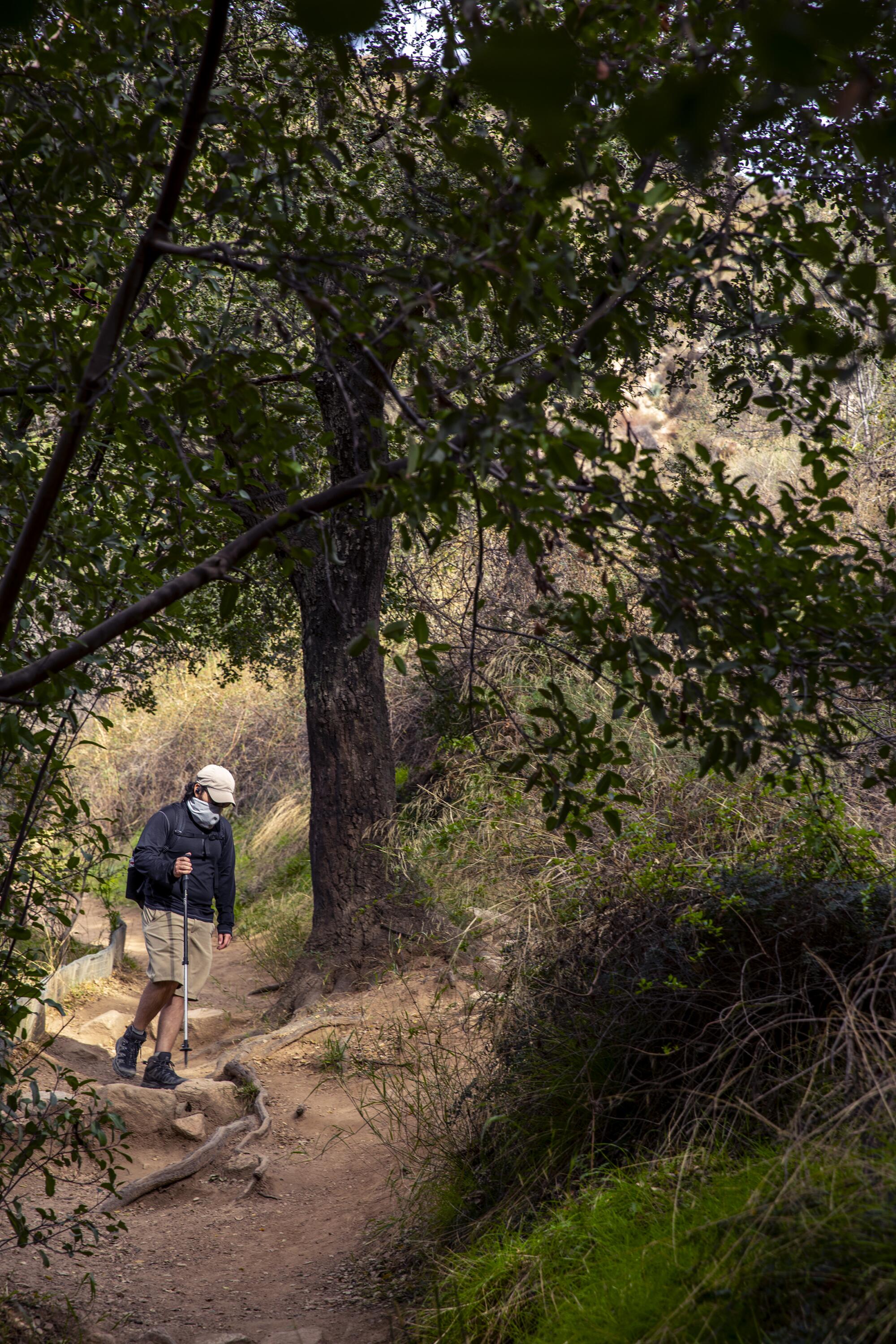
The incline railway and the hotel were built by professor Thaddeus Lowe, who, among other accomplishments, ran the Union Army Balloon Corps that spied on Confederate troops for President Lincoln. Both were initially profitable.
“The hotel was an expensive proposition,” said Paul Ayers, a lawyer who spent decades learning about Echo Mountain’s history by researching and hiking its trails. “It was like the Ritz-Carlton.”
The Victorian-style hotel was marketed as a winter resort, though it was open year-round. It had “a social hall with a fireplace, Persian rugs and grand piano; a large dining room with a balcony where an orchestra performed; a smaller ladies’ drawing room; a billiards room; bowling alley; barbershop and shoeshine stand, all with electric lights and heating provided by gas pumped from Pasadena in the valley below,” says an Altadena Historical Society digital history.
Whether you’re looking for ocean views or desert landscapes or soaring mountain peaks, Los Angeles offers miles upon miles of strikingly different trails.
It cost $15 a week to stay in one of the 70 rooms. Guests could choose from 17 types of wines (California and imported) and six types of Champagne, according to a menu from Feb. 22, 1895.
The hotel was part of a complex that included a 40-room chalet, small zoo, an observatory and the searchlight from the Chicago World’s Fair of 1893. It was painted bright white and nicknamed “The White City” in part because it was so visible from the flatlands below.
The good times didn’t last.
The hotel burned to the ground in 1900 and was never rebuilt. Lowe ran out of money while making more elaborate resort plans and the railway became the property of the Pacific Electric Railway Co., operators of L.A.’s network of electric Red Cars. The incline railway took its last trip up the mountain in 1938.
Hikers who climb the 2½ miles to the top of Echo Mountain today won’t find anything close to luxury. The go-to workout trail, shared with mountain bikers and trail runners, winds relentlessly uphill. The most popular route, the Sam Merrill Trail, was built in 1935 with switchbacks that take the sting out of the steepness. On a breezy day, the ascent goes quickly; on a blistering hot day, it can be miserable.
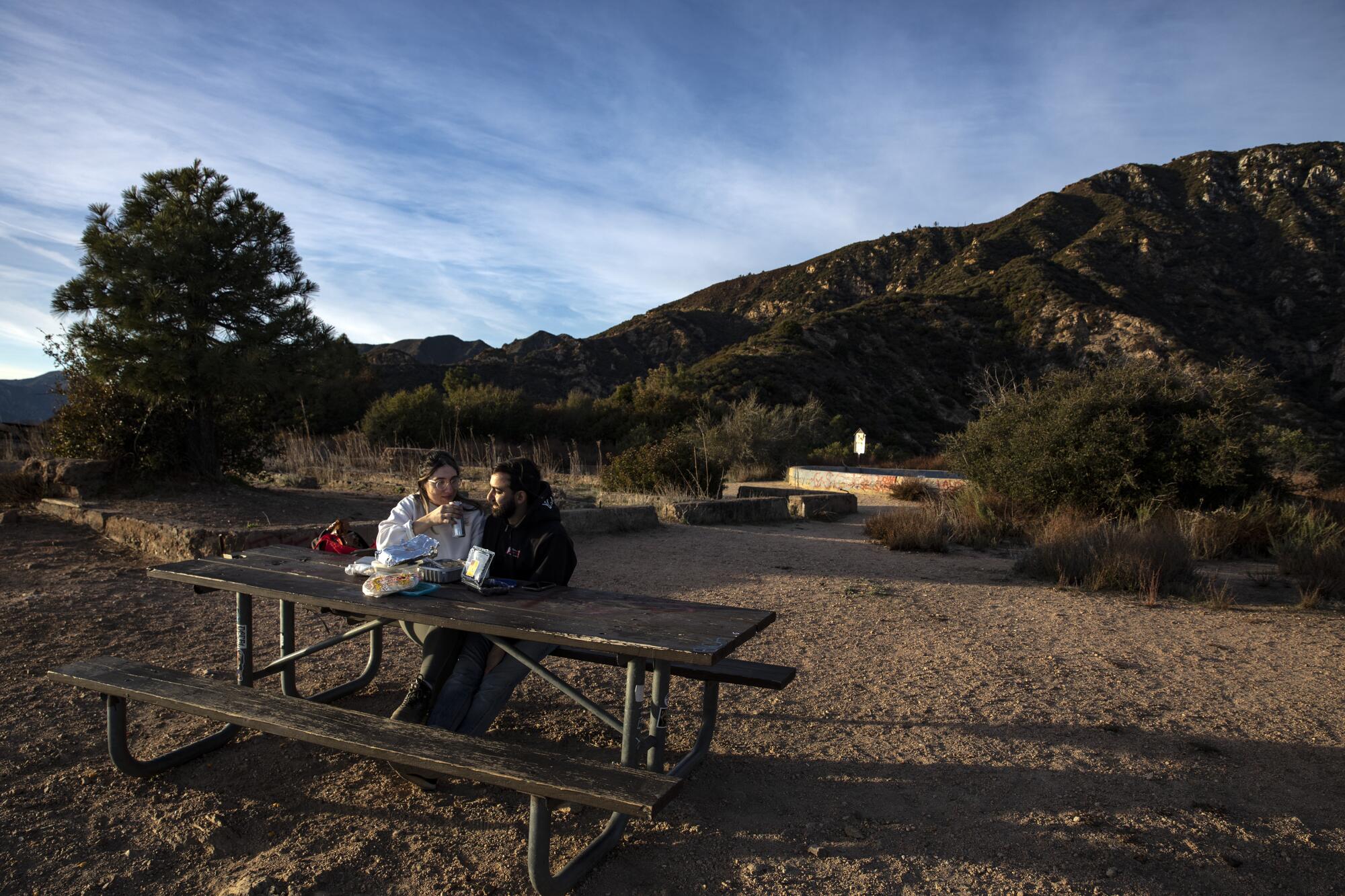
You understand what drew early hikers to this place as you rise and start to see wide-angle views of Los Angeles and, on occasion, the ocean. At the top, a set of stairs and the hotel’s foundation remain. Historical markers with photos (Ayers had a hand in these) tell the story of the resort and the rail line. At the edge of the mountain are remnants of the rail station and a 9-foot-wide cog gear and cable that pulled the incline cars up the mountain.
Turn and find amid the ruins the Echo Phone, a black metal megaphone mounted on a pole that points toward Castle Canyon. Yep, before there were cellphones and selfies, this is how people amused themselves. Feel free to step up and give your best scream (no touching necessary) — and listen for the reverb. It’s a beautiful place to stop and look into the heart of the mountains.
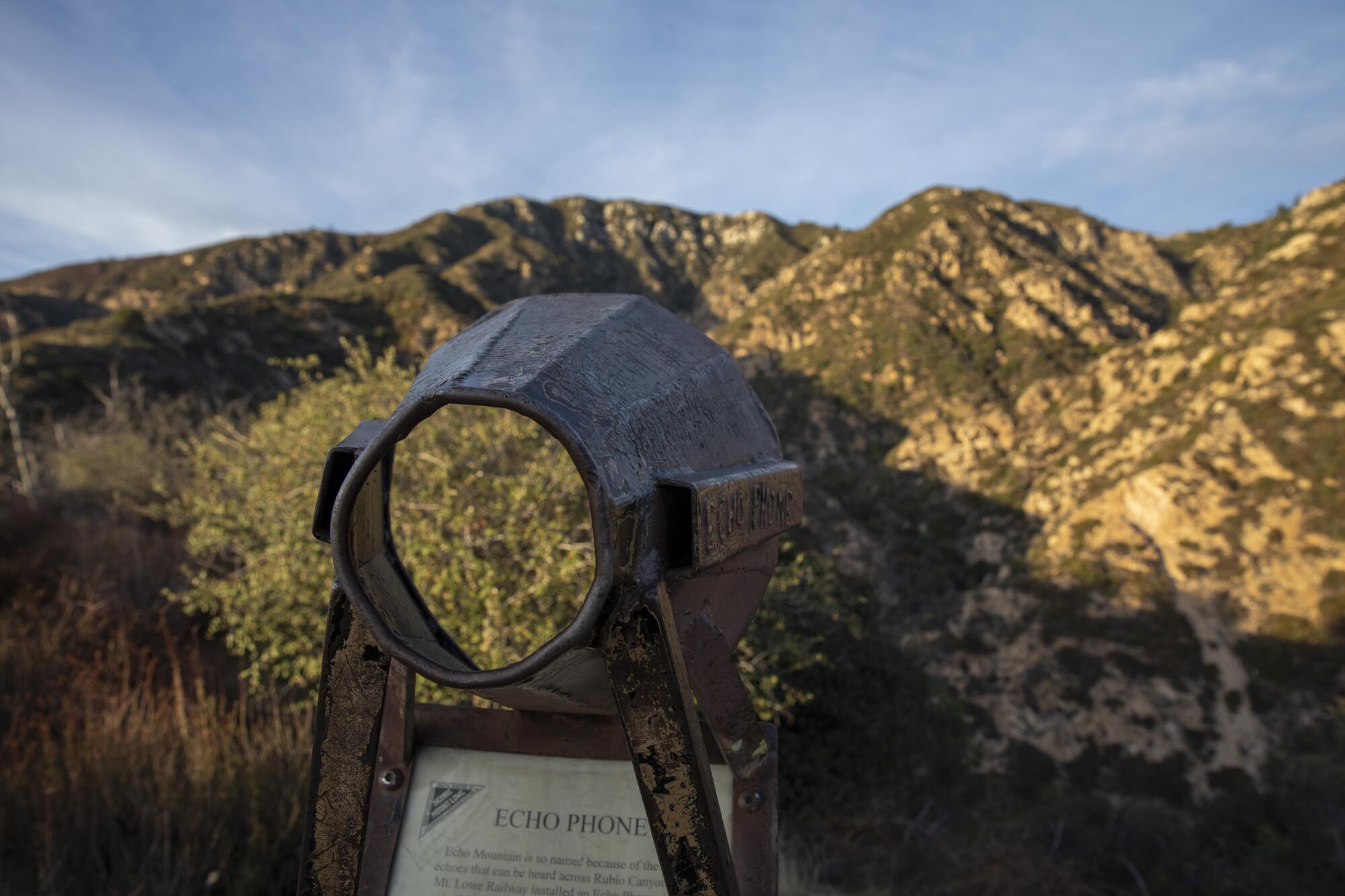
Though the hotel vanished, the great hiking era continued, hitting its stride between 1910 and 1920 as L.A.’s development spread east toward Pasadena, the San Gabriel Valley and on to the San Bernardino area. Naturalist and activist John Muir helped popularize the area by writing about hikes he took in the San Gabriel Mountains near Pasadena in the late 1800s.
“The mountains were always right there in everybody’s backyard,” said Mark Landis, who writes about Southern California’s early history. “As things became more civilized in the towns at the foot of the mountains, a lot of folks began to yearn for some of those more rugged pioneer times their forefathers had told them about and they began to venture up in the mountains, establish hiking trails.”
With the crush of hikers came more businesses too. Although Echo Mountain’s hotel was lost, other less grand resorts flourished. “Business owners saw a real opportunity,” Landis said. “They started to build … little stops along the way where [hikers] could stop, get refreshments, rest awhile and move on to the next point.”
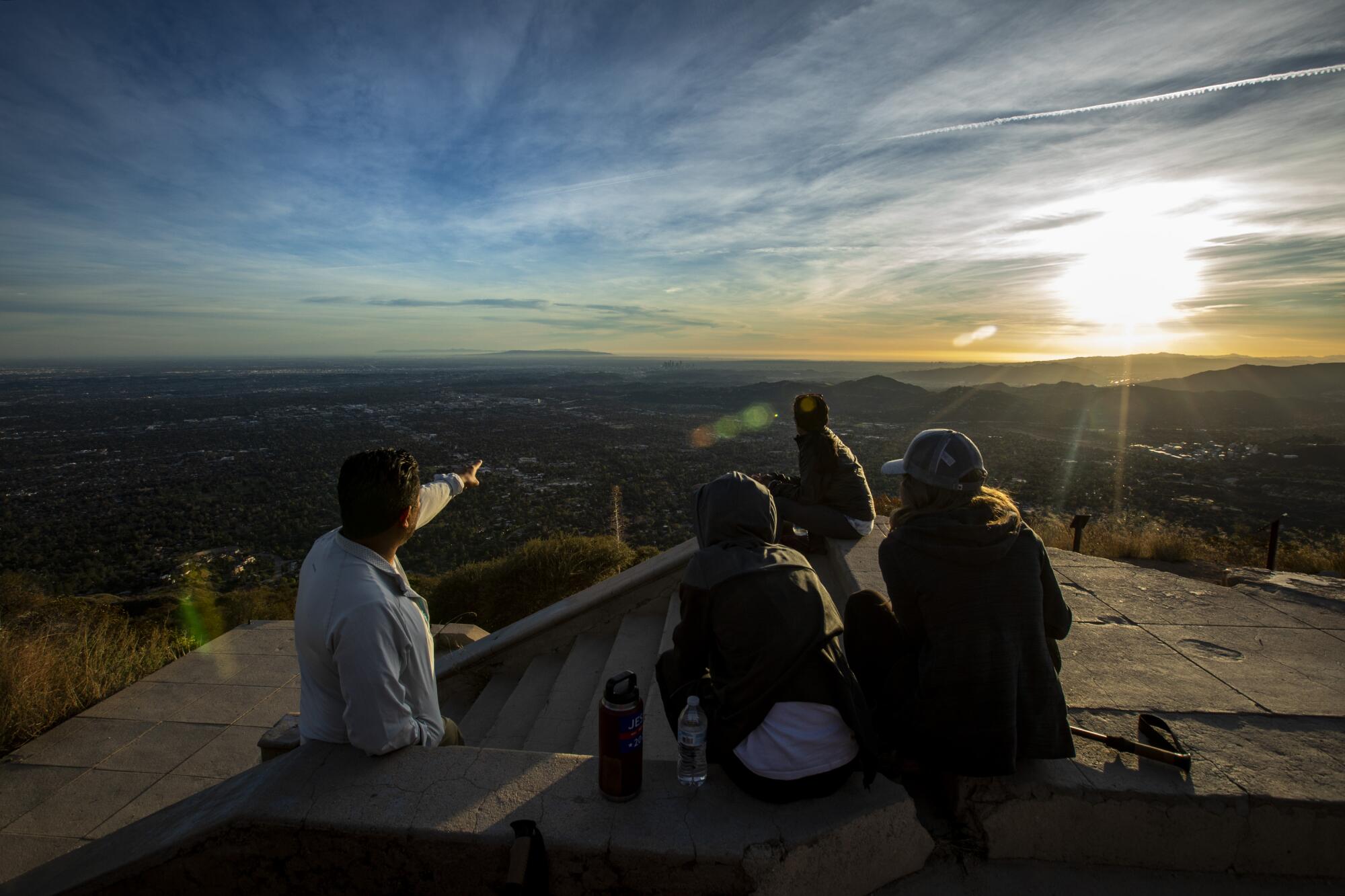
People typically would spend the day hiking and then arrive at a resort to spend the night in a hammock or in a tent cottage. Unlike Echo Mountain, Switzer’s Camp and the Mt. Wilson Resort, both north of La Cañada Flintridge in the same mountain range, were accessible only on foot or by mule.
Ayers had a different take on the reason for the hiking boom. He chalked it up to restless, bored Angelenos with nothing else to do. “There just weren’t that many recreational opportunities to get out of the house,” he said.
The Ventura Land Trust recently opened the Harmon Canyon Preserve for free hiking and biking through oak groves, meadows and coastal and mountain views.
Both he and Landis agreed on what killed the great hiking era: the car. With the automobile came improved roads and an easier way to get to L.A.’s mountains (construction began in 1929 on the Angeles Crest Highway). By the late 1920s, the hiking boom had begun to bust.
“After 1920, you have a lot of other things to do,” Ayers said. “You could go to the movies, you could go and see professional sports, you had radio and more than [anything else], you had the automobile.”
If you go
Park at the end of Lake Avenue in Altadena. Enter through the open gate and walk on a paved road until you see a sign for the Sam Merrill Trail. The route is 2½ miles each way with 1,500 feet of gain/loss. Once you reach the top, walk east to see the ruins of the hotel and incline railway, then turn toward the mountains to find the Echo Phone.
More to Read
Sign up for The Wild
We’ll help you find the best places to hike, bike and run, as well as the perfect silent spots for meditation and yoga.
You may occasionally receive promotional content from the Los Angeles Times.
